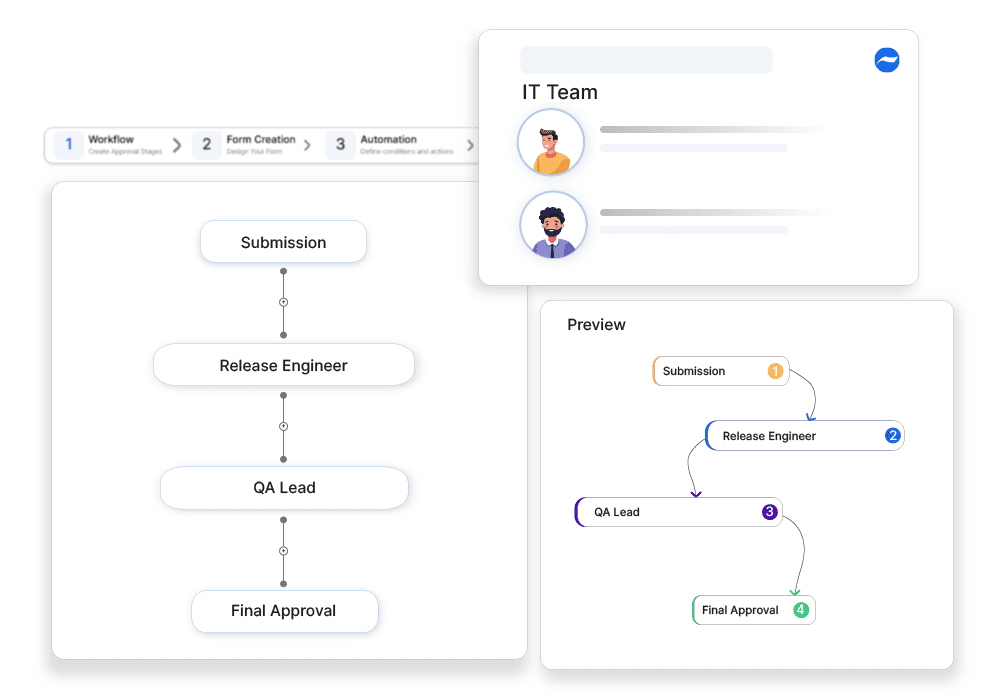Application Rollback Procedure Workflow
Automate application rollback approvals to ensure safe reversions of failed deployments.

Why automate?
Application rollbacks restore previous stable versions of software when deployments fail. Without structured approvals, rollbacks may be executed prematurely or delayed, causing extended downtime and operational disruptions. Manually handling rollback requests results in miscommunication, unapproved reversions, and inconsistent tracking. Without an approval process, teams may execute rollbacks without verifying root causes, leading to repeat failures. Cflow helps to automate Application Rollback Approvals, ensuring that rollback requests are properly reviewed, authorized, and executed based on business impact, reducing downtime and improving deployment reliability.
How Cflow Helps:
Approval-Driven Rollback Execution
Cflow ensures that all rollback requests go through structured approvals, preventing unnecessary reversions.
Compliance with Change Management Policies
Approved rollbacks align with IT change control policies, ensuring stability.
Faster Response for Urgent Rollbacks
Critical rollbacks receive fast-tracked approvals, minimizing downtime.
Complete Audit Log for Incident Reviews
Cflow logs all rollback approvals, enabling IT teams to track failures and improve response strategies.
Frequently Asked Questions
What is application rollback?
A defined process to revert to a previous version of an application in case of deployment issues.
What are the main challenges?
Incomplete rollback scripts, data compatibility issues, and delayed recovery.
How can it be improved?
By automating rollbacks and keeping prior versions ready for quick re-deployment.



